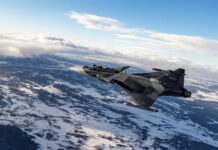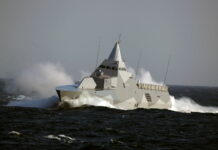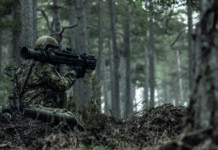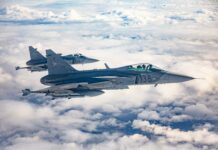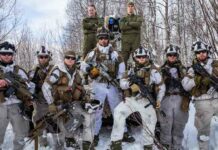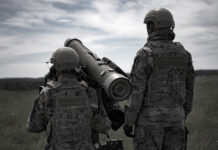The Dutch Armed Forces’ Combat Training Centre for live simulation of unit and formation exercises is being modernised. Saab has announced that it has been contracted to supply simulation equipment and facilities for about €71M and to support operations for the first 10 years for another €65M. Support for a further five years was agreed as an option.
The modernised combat training centre is housed in twenty containers when not in use and can be deployed on a mobile basis. Saab has upgraded the components to the latest technical standards and implemented enhanced functionalities and new capabilities. These include the latest generation of modular and scalable soldier and vehicle systems (2nd generation AGDUS). The data transfer protocols are standardised and interoperable with systems worldwide.
Combat Training Centre Features
As a novelty, the simulation system includes the mapping of the functionalities of mortars and forward observers (Joint Fire Support). A mixture of live and virtual training is used, which is referred to as ‘blended training’. This provides a new dimension to exercise monitoring, allowing exercise commanders to monitor both the entire exercise area and individual soldiers in ‘augmented reality’. In addition, the representation of combat in urban environments has been improved.
With the mobile version of the Combat Training Centre, units and formations of the Koninklijke Landmacht and the Corps Mariniers can use the flexible training solutions at any location and practise combat procedures as realistically as possible. The upgrade improves the training capability and creates the possibility for the armed forces to train both at home and abroad with their international partners.
In the maximum upgrade stage, up to 10,000 combat participants can practise simultaneously. For this purpose, a deployable Combat Training Centre (CTC) will be set up from which the exercise will be controlled and monitored and material prepared for the evaluation of the exercise. For use as a mobile exercise centre, “gamer configurations” have been defined with adapted scopes for exercises down to platoon level.
For the continuous exchange of experiences, an “Interoperability User Community” (IUC) was already formed in 2008, which increased the previously only rudimentary interoperability by defining standards for laser codes, communications and simulation software. From originally seven members, the IUC has grown to 16 members today. The goal is full interoperability for all combat functions so that large formations can train in multinational exercises.
The modernised mobile combat training centre is expected to provide military training capabilities to Dutch ground forces for at least fifteen years.
Gerhard Heiming






